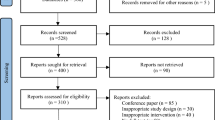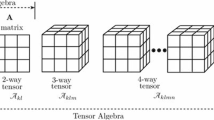Abstract
This paper presents two novel directional patterns, a Maximum Response-based Directional Texture Pattern (MRDTP) and a Maximum Response-based Directional Number Pattern (MRDNP), for recognizing the facial emotions in constrained as well as unconstrained situations. The intensity information obtained from the maximum of the edge responses, after applying eight Kirsch masks, is used for the calculation of facial features in MRDTP. In MRDNP, instead of intensity information, the direction number of the maximum response is used. After dividing MRDNP and MRDTP code images into grids, feature vectors are created from the concatenated histograms obtained from the grids. This paper also proposes an effective Generalized Supervised Dimension Reduction System (GSDRS) and uses Extreme Learning Machine with Radial Basis Function (ELM-RBF) classifier for rapid and efficient classification of emotions. Both the proposed patterns are more effective than the existing ones in removing random noise and providing good structural information using prominent edges which help to achieve high classification accuracy when tested with seven datasets.





















Similar content being viewed by others
References
Abdulrahman M, Gwadabe TR, Abdu FJ, Eleyan A (2014) Gabor wavelet transform based facial expression recognition using PCA and LBP. In 2014 22nd Signal Processing and Communications Applications Conference (SIU), IEEE, pp 2265–2268
Agarwal S, Santra B, Mukherjee DP (2016) Anubhav: recognizing emotions through facial expression. Vis Comput. https://doi.org/10.1007/s00371-016-1323-z
Ahmed F, Hossain E (2013) Automated facial expression recognition using gradient-based ternary texture patterns. Chin J Eng. https://doi.org/10.1155/2013/831747
Ahmed F, Kabir MH (2012) Directional ternary pattern (DTP) for facial expression recognition. In IEEE International Conference on Consumer Electronics, pp 265–266
Aifanti, N, Papachristou C, Delopoulos A (2010) The MUG facial expression database. In Proc. 11th Int. Workshop on Image Analysis for Multimedia Interactive Services (WIAMIS), Desenzano, Italy, April 12–14
Anisetti M, Bellandi V (2009) Emotional state inference using face related features. In New directions in intelligent interactive multimedia systems and services-2. Springer Berlin Heidelberg, pp 401–411
Asthana A, Zafeiriou S, Cheng S, Pantic M (2014) Incremental face alignment in the wild. In Proceedings of the IEEE Conference on Computer Vision and Pattern Recognition, pp 1859–1866
Bartlett MS, Littlewort G, Fasel I, Movellan JR (2003) Real Time Face Detection and Facial Expression Recognition: Development and Applications to Human Computer Interaction. In Computer Vision and Pattern Recognition Workshop, CVPRW'03, pp 53–53
Baudat G, Anouar F (2000) Generalized discriminant analysis using a kernel approach. Neural Comput 12(10):2385–2404
Berretti S, Amor BB, Daoudi M, Del Bimbo A (2011) 3D facial expression recognition using SIFT descriptors of automatically detected key points. Vis Comput 27(11):1021–1036
Bhat FA, Wani MA (2016) Elastic bunch graph matching based face recognition under varying lighting, pose, and expression conditions. IAES International Journal of Artificial Intelligence (IJ-AI) 3(4):177–182
Bourbakis N, Esposito A, Kavraki D (2011) Extracting and associating meta-features for understanding people’s emotional behaviour: Face and speech. Cogn Comput 3(3):436–448
Calder AJ, Burton AM, Miller P, Young AW, Akamatsu S (2001) A principal component analysis of facial expressions. Vis Res 41(9):1179–1208
Castillo JA, Rivera AR, Chae O ( 2012) Facial expression recognition based on local sign directional pattern. In 19th IEEE International Conference on Image Processing, pp 2613–2616
Chang CC, Lin CJ (2011) LIBSVM: a library for support vector machines. ACM Transactions on Intelligent Systems and Technology (TIST) 2(3):27
Chen J, Chen Z, Chi Z, Fu H (2014) Facial expression recognition based on facial components detection and hog features. In International Workshops on Electrical and Computer Engineering Subfields, pp 884–888
Cortes C, Vapnik V (1995) Support-vector networks. Mach Learn:20273–20229
Dhall A, Goecke R, Lucey S, Gedeon T (2011) Static facial expression analysis in tough conditions: Data, evaluation protocol and benchmark. In Proc. Int. Conf Comput. Vis. Workshops, pp 2106–2112
Dhall, A, Asthana A, Goecke R, Gedeon T (2011) Emotion recognition using PHOG and LPQ features. In Automatic Face & Gesture Recognition and Workshops (FG 2011), IEEE International Conference, pp 878–883
Dhall A, Goecke R, Lucey S, Gedeon T (2012) Collecting Large, Richly Annotated Facial Expression Databases from Movies. IEEE MultiMedia 19:34–41
Dhall A, Goecke R, Joshi J, Sikka K, Gedeon T (2014) Emotion recognition in the wild challenge 2014: baseline, data and protocol, ACM ICMI 2014
Ekman P (2004) Emotional and conversational nonverbal signals. In Language, knowledge, and representation, Springer Netherlands, pp 39–50
Ekman P, Friesen WV (1971) Constants across cultures in the face and emotion. J Pers Soc Psychol 17(2):124
Eleftheriadis S, Rudovic O, Pantic M (2015) Discriminative shared Gaussian processes for multiview and view-invariant facial expression recognition. IEEE Trans Image Process 24(1):189–204
Ghimire D, Lee J, Li ZN, Jeong S (2016) Recognition of facial expressions based on salient geometric features and support vector machines. Multimedia Tools and Applications 15:1–26
Gupta SK (1998) Peak decomposition using Pearson type VII function. J Appl Crystallogr 31(3):474–476
Haghighat M, Zonouz S, Abdel-Mottaleb M (2015) CloudID: Trustworthy cloud-based and cross-enterprise biometric identification. Expert Syst Appl 42(21):7905–7916
Hamester D, Barros P, Wermter S (2015) Face expression recognition with a 2-channel Convolutional Neural Network. In 2015 International Joint Conference on Neural Networks (IJCNN), pp 1–8
Hao XL, Tian M (2017) Deep belief network based on double weber local descriptor in micro-expression recognition. In Advanced Multimedia and Ubiquitous Engineering May 22. Springer, Singapore, pp 419–425
Huang GB, Siew CK (2005) Extreme learning machine with randomly assigned RBF kernels. Int J Inf Technol 11(1):16–24
Huang GB, Zhou H, Ding X, Zhang R (2012) Extreme learning machine for regression and multiclass classification. Part B: IEEE Transactions on Systems, Man, and Cybernetics 42(2):513–529
Iosifidis A, Tefas A, Pitas I (2015) On the kernel extreme learning machine classifier. Pattern Recogn Lett 54:11–17
Jabid T, Kabir MH, Chae O (2010) Robust facial expression recognition based on local directional pattern. ETRI J 32(5):784–794
Jolliffe I (2002) Principal component analysis. Wiley, New York
Kanade T, Cohn JF, Tian Y (2000) Comprehensive database for facial expression analysis. Proceedings of Fourth IEEE International Conference in Automatic Face and Gesture Recognition, pp 46–53
Kim Y, Lee H, Provost EM (2013) Deep learning for robust feature generation in audiovisual emotion recognition. In 2013 I.E. International Conference on Acoustics, Speech and Signal Processing, pp 3687–3691
Kim Y, Yoo B, Kwak Y, Choi C, Kim J (2017) Deep generative-contrastive networks for facial expression recognition, arXiv preprint arXiv:1703.07140
Kirsch RA (1971) Computer determination of the constituent structure of biological images. Comput Biomed Res 4(3):315–328
Kotsia I, Pitas I (2007) Facial expression recognition in image sequences using geometric deformation features and support vector machines. IEEE Trans Image Process 16(1):172–187
Lucey P, Cohn JF, Kanade T, Saragih J, Ambadar Z, Matthews I (2010) The extended cohn-kanade dataset (ck+): A complete dataset for action unit and emotion-specified expression. IEEE Computer Society Conference on Computer Vision and Pattern Recognition Workshops (CVPRW), pp 94–101
Lyons M, Akamatsu S, Kamachi M, Gyoba J (1998) Coding facial expressions with gabor wavelets. Third IEEE International Conference on Automatic Face and Gesture Recognition, pp 200–205
Mavadati SM, Mahoor MH, Bartlett K, Trinh P (2012) Automatic detection of non-posed facial action units. In Image Processing (ICIP), 19th IEEE International Conference on 2012 Sep 30 IEEE, pp 1817–1820
Mavadati SM, Mahoor MH, Bartlett K, Trinh P, Cohn JF (2013) Disfa: A spontaneous facial action intensity database. IEEE Trans Affect Comput 4(2):151–160
Mavadati M, Sanger P, Mahoor MH (2016) Extended DISFA Dataset: Investigating Posed and Spontaneous Facial Expressions. In Proceedings of the IEEE Conference on Computer Vision and Pattern Recognition Workshops, pp 1–8
Mollahosseini A, Chan D, Mahoor MH (2016) Going deeper in facial expression recognition using deep neural networks. In Applications of Computer Vision (WACV), 2016 I.E. Winter Conference, pp 1–10
Ojansivu V, Heikkilä J (2008) Blur insensitive texture classification using local phase quantization. In International conference on image and signal processing, pp 236–243
Pantic M, Valstar M, Rademaker R, Maat L (2005) Web-based database for facial expression analysis. In Multimedia and Expo, ICME 2005. IEEE International Conference on Jul 6 IEEE, pp 5
Rahulamathavan Y, Phan RC, Chambers JA, Parish DJ (2013) Facial expression recognition in the encrypted domain based on local fisher discriminant analysis. IEEE Trans Affect Comput 4(1):83–92
Ramirez Rivera A, Rojas Castillo J, Chae O (2013) Local directional number pattern for face analysis: Face and expression recognition. IEEE Trans Image Process 22(5):1740–1752
Rivera AR, Castillo JA, Chae O (2012) Recognition of face expressions using local principal texture pattern. In 19th IEEE International Conference on Image Processing, pp 2609–2612
Rivera AR, Rojas J, Chae O (2012) Local gaussian directional pattern for face recognition. In Pattern Recognition (ICPR), 21st International Conference, pp 1000–1003
Rivera AR, Castillo JR, Chae O (2015) Local directional texture pattern image descriptor. Pattern Recogn Lett 51:94–100
Shan C, Gong S, McOwan PW (2005) Appearance manifold of facial expression. In Computer Vision in Human-Computer Interaction, pp 221–230
Shan C, Gong S, McOwan PW (2009) Facial expression recognition based on local binary patterns: A comprehensive study. Image Vis Comput 27(6):803–816
Suja P, Tripathi S, Deepthy J (2014) Emotion recognition from facial expressions using frequency domain techniques. In Advances in signal processing and intelligent recognition systems, pp 299–310
Tan X, Triggs B (2010) Enhanced local texture feature sets for face recognition under difficult lighting conditions. IEEE Trans Image Process 19(6):1635–1650
Tao J, Tan T (2005) Affective computing: A review. In Affective computing and intelligent interaction, pp 981–995
Turk M, Pentland A (1991) Eigenfaces for recognition. J Cogn Neurosci 3(1):71–86
Üstün B, Melssen WJ, Buydens LMC (2006) Facilitating the application of Support Vector Regression by using a universal Pearson VII function based kernel. Chemom Intell Lab Syst 81(1):29–40
Valstar M, Pantic M (2010) Induced disgust, happiness and surprise: an addition to the mmi facial expression database. In Proc. 3rd Intern. Workshop on EMOTION (satellite of LREC): Corpora for Research on Emotion and Affect May 21, p 65
Valstar MF, Pantic M (2012) Fully automatic recognition of the temporal phases of facial actions. IEEE Transactions on Systems, Man, and Cybernetics 42(1):28–43
Viola P, Jones MJ (2004) Robust real-time face detection. Int J Comput Vis 57(2):137–154
Vo A, Ly NQ (2015) Facial expression recognition using pyramid local phase quantization descriptor. In Knowledge and Systems Engineering, Springer International Publishing, pp 105–115
Wang H, Huang H, Makedon F (2014) Emotion detection via discriminant laplacian embedding. Univ Access Inf Soc 13(1):23–31
Wen G, Hou Z, Li H, Li D, Jiang L, Xun E (2017) Ensemble of deep neural networks with probability-based fusion for facial expression recognition, cognitive computation, pp 1–4
Wu T, Bartlett MS, Movellan JR (2010) Facial expression recognition using gabor motion energy filters. In IEEE Computer Society Conference on Computer Vision and Pattern Recognition-Workshops, pp 42–47
Xie S, Hu H (2017) Facial expression recognition with FRR-CNN. Electron Lett 53(4):235–237
Yang S, Bhanu B (2012) Understanding discrete facial expressions in video using an emotion avatar image. IEEE Transactions on Systems, Man, and Cybernetics, Part B (Cybernetics) 42(4):980–992
Yang J, Zhang D, Frangi AF, Yang JY (2004) Two-dimensional PCA: a new approach to appearance-based face representation and recognition. IEEE Trans Pattern Anal Mach Intell 26(1):131–137
Yang J, Frangi AF, Yang JY, Zhang D, Jin Z (2005) KPCA plus LDA: a complete kernel Fisher discriminant framework for feature extraction and recognition. IEEE Trans Pattern Anal Mach Intell 27(2):230–244
Zhang B, Zhang L, Zhang D, Shen L (2010) Directional binary code with application to PolyU near-infrared face database. Pattern Recogn Lett 31(14):2337–2344
Zhang K, Huang Y, Du Y, Wang L (2017) Facial expression recognition based on deep evolutional spatial-temporal networks. IEEE Trans Image Process 26(9):4193–4203
Zhao L, Wang Z, Zhang G (2017) Facial expression recognition from video sequences based on spatial-temporal motion local binary pattern and gabor multiorientation fusion histogram. Math Probl Eng. https://doi.org/10.1155/2017/7206041
Zia MS, Jaffar MA (2015) An adaptive training based on classification system for patterns in facial expressions using SURF descriptor templates. Multimedia Tools and Applications 74(11):3881–3899
Author information
Authors and Affiliations
Corresponding author
Rights and permissions
About this article
Cite this article
Alphonse, A.S., Dharma, D. Novel directional patterns and a Generalized Supervised Dimension Reduction System (GSDRS) for facial emotion recognition. Multimed Tools Appl 77, 9455–9488 (2018). https://doi.org/10.1007/s11042-017-5141-8
Received:
Revised:
Accepted:
Published:
Issue Date:
DOI: https://doi.org/10.1007/s11042-017-5141-8




